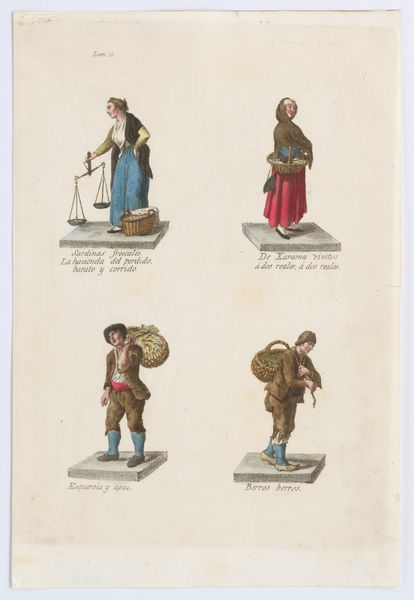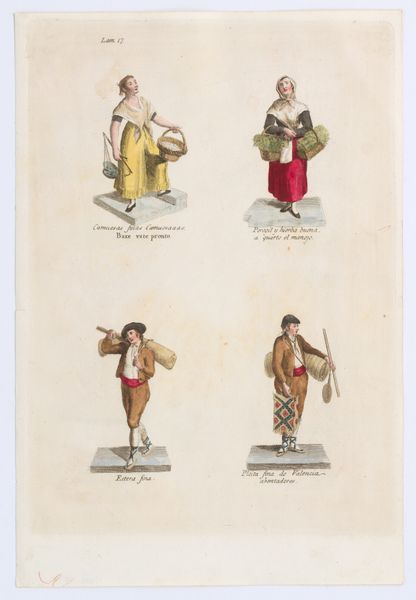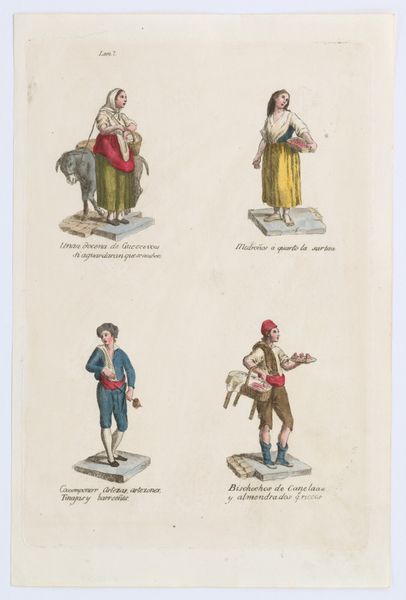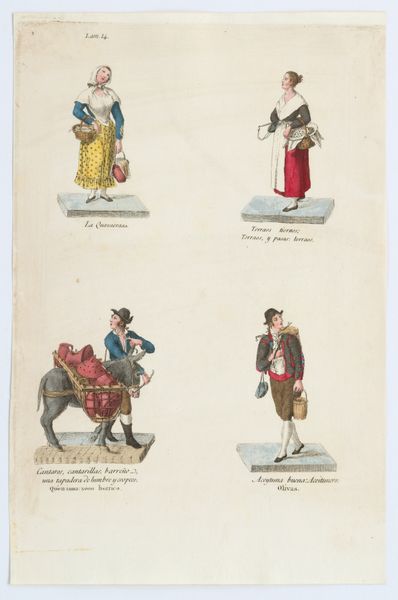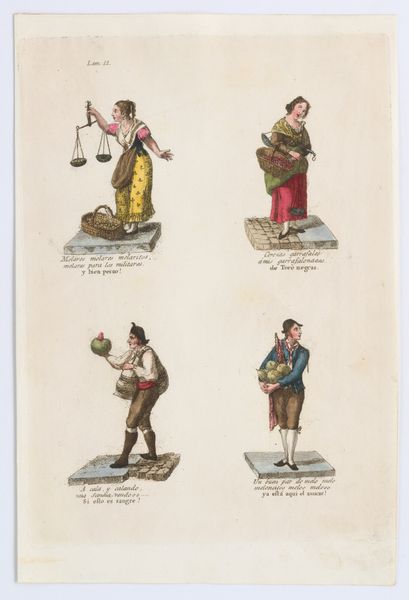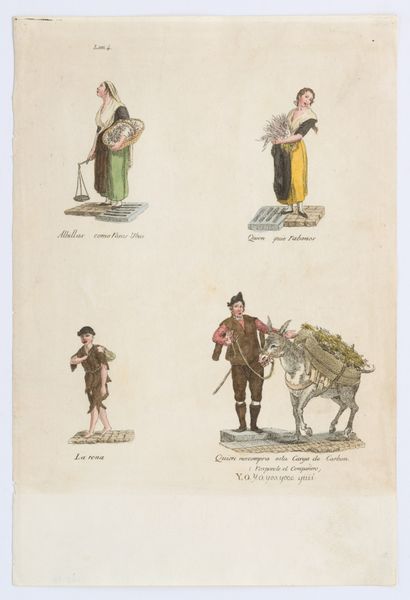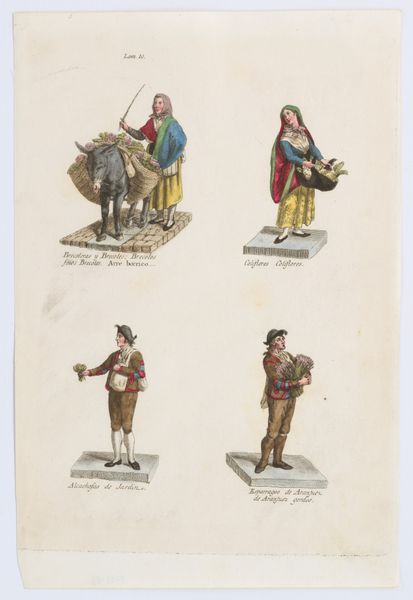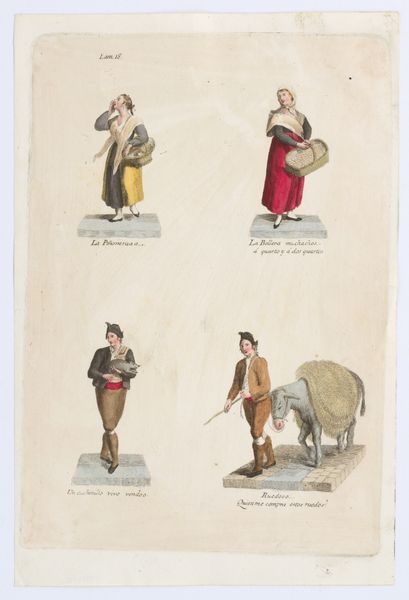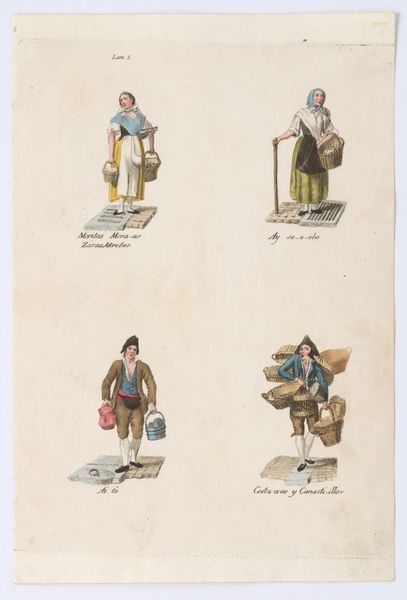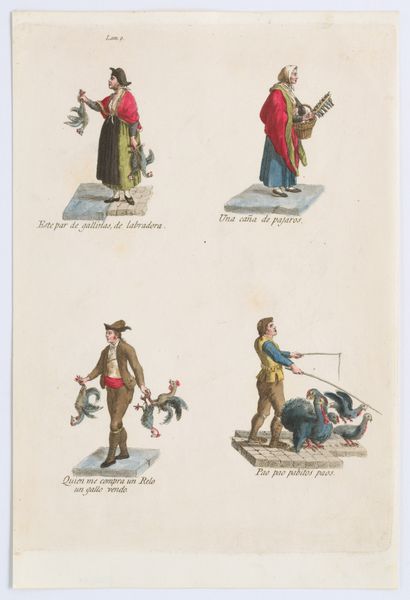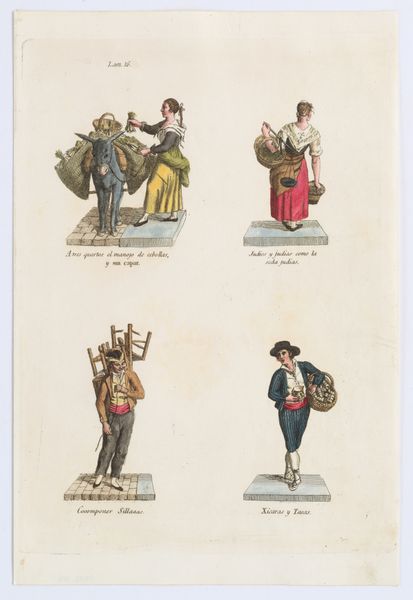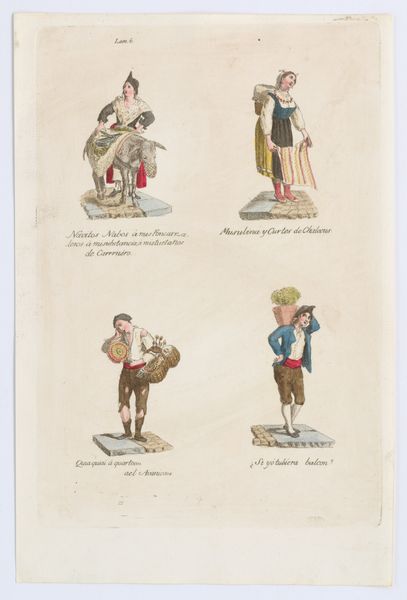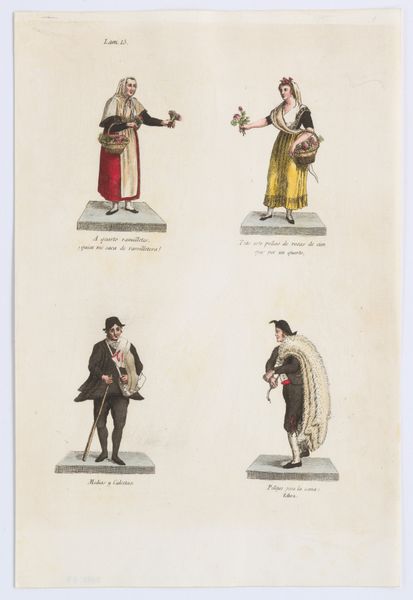
Plate 13: four street vendors from Madrid selling muscat grapes, plums, pans and pop-up saints, from 'Los Gritos de Madrid' (The Cries of Madrid) 1809 - 1817
0:00
0:00
drawing, print, watercolor
#
portrait
#
drawing
#
neoclassicism
# print
#
figuration
#
watercolor
#
watercolour illustration
#
genre-painting
#
watercolor
Dimensions: Sheet: 11 13/16 × 7 7/8 in. (30 × 20 cm)
Copyright: Public Domain
Editor: This is Plate 13 from 'Los Gritos de Madrid' (The Cries of Madrid), created between 1809 and 1817 by Miguel Gamborino. It's a print with watercolor, featuring four street vendors. I find the composition quite interesting; they’re all isolated, almost like specimens. How do you interpret this work, considering its visual structure? Curator: The plate presents us with a compelling study in representation. Note the deliberate arrangement, almost grid-like, separating each figure. This structural division emphasizes each individual vendor as a distinct entity, a type. The use of watercolor delicately defines their forms, but without overly softening the edges; observe the precision in rendering the folds of their clothing, each line carefully considered to convey texture and volume. Does this attention to detail, within the broader organizing principle, suggest anything to you about its intended purpose? Editor: Perhaps it’s meant to categorize or document these figures systematically. The limited color palette also lends itself to that impression. Curator: Precisely. The restraint in color usage—primarily earthy tones and muted reds—contributes to a sense of objective observation. Each vendor, despite their individual wares, is presented through a similar visual language. Look at the planes on which they stand – small pedestals further isolating and objectifying the vendors and hinting at classical sculpture traditions. It invites a detached analysis. Editor: That's a great point; the similar planes under each figure weren't immediately obvious to me. This detached analysis, as you describe, creates a sort of catalog. Curator: Yes, and the minimal background further reinforces the isolation. This formal strategy directs our gaze to the intrinsic details of each figure—their posture, their garments, the goods they carry. What does this visual austerity achieve, do you think? Editor: It makes the viewer concentrate on their specific attributes but perhaps also de-emphasizes their humanity in some ways. I learned to pay more attention to these organizational elements of a picture! Curator: And I in turn am reminded of how much our understanding is filtered through our personal lens, bringing with it a new range of perspectives!
Comments
No comments
Be the first to comment and join the conversation on the ultimate creative platform.

